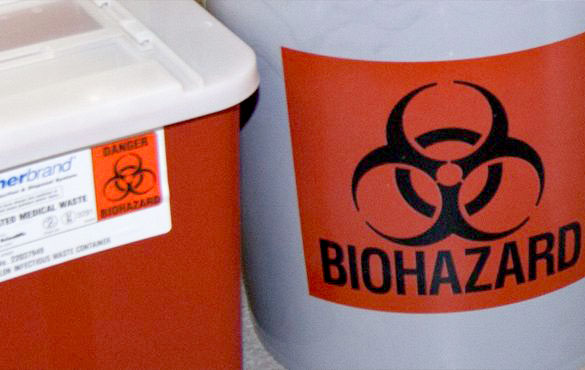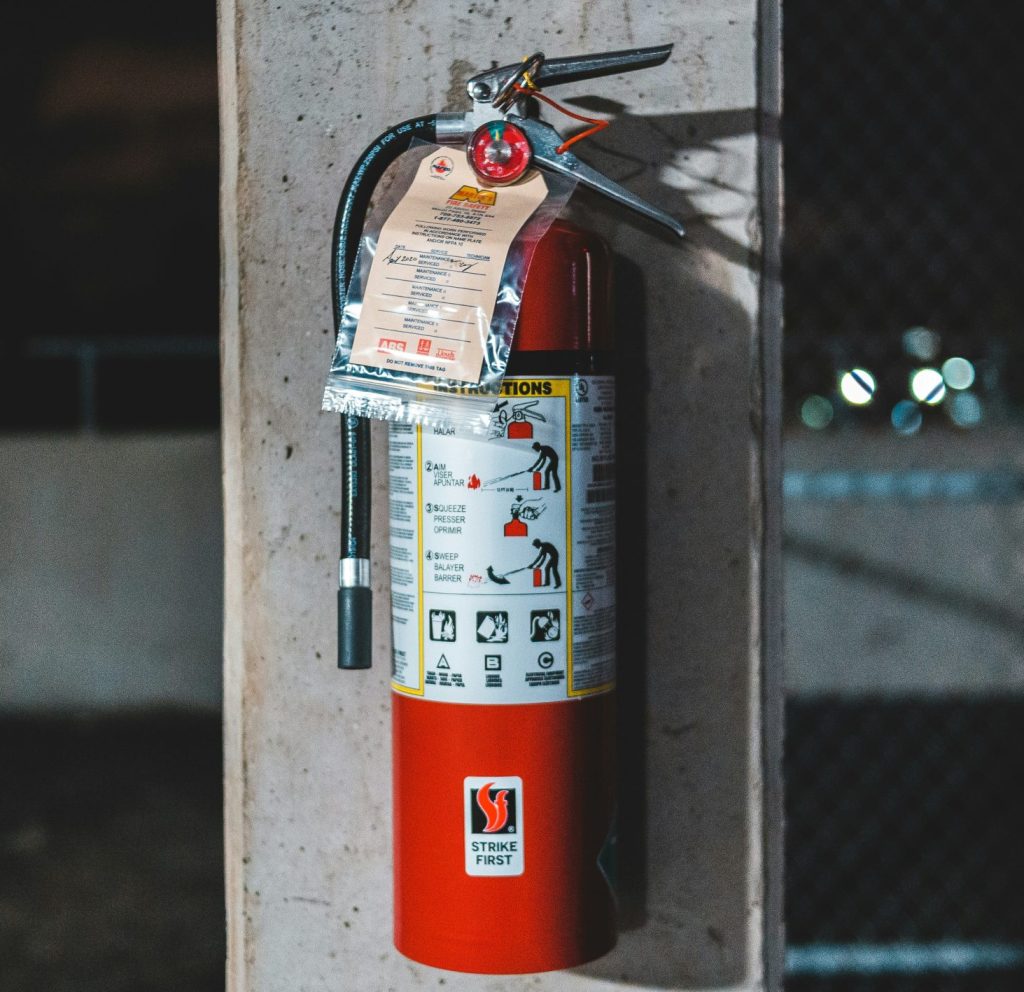Protective Equipment for Working with Animals
Anyone working in a laboratory is responsible for their own safety, as well as those working around them. Ultimately the lab director (faculty/lab manager/supervisor) is responsible for the safety of anyone entering their laboratory – faculty, staff, student, or visitor. Personal safety begins with refraining from the following activities in laboratories, animal rooms, procedure rooms, or cold rooms.
- Eating, drinking or smoking
- Storing food and beverages
- Preparing food
- Applying cosmetics
Personal protection also extends to:
- Wearing appropriate personal protective equipment (PPE) as well as appropriate clothing under the PPE – i.e. no open toed shoes and the legs and arms should be covered to prevent contamination potential.
- Using, when applicable, good engineering controls such as:
- Restraint devices
- Local exhaust ventilation systems
- Maintaining emergency response equipment and understanding how to use it
Personal Protective Equipment
Personnel can use the following equipment for protection from occupational safety and health risks:
- PPE
- Respiratory protection
- Hearing protection
The following personnel are responsible for providing training on the use of PPE to persons under their supervision:
- ULAM Supervisors for the animal housing
- Lab Director in the research areas
EHS is available to assist in the proper selection of PPE for the hazard being managed.
PPE When Working with Animals
The following PPE is used to protect personnel from injury to their eyes, face, head, feet, and hands when working with animals. The department is responsible for supplying the PPE. CAUTION: Before putting on PPE, cover open cuts or abrasions on the body with appropriate dressing.
| PPE | CARE INSTRUCTIONS |
|---|---|
|
Departments make arrangements for PPE to be professionally laundered. NOTE: The PPE is not to be taken home. Protective garments should be left in the laboratory when work is completed or, if working with radioactive material, until monitored and found free of radioactive contamination. |
|
Dispose of these items prior to exiting the room. |
|
Clean after each use. |
More Information
For more information about the level of PPE required based on the level of risk for each animal, go to the Animal Handler PPE chart.
Respiratory Protection
Mandatory respirator users require medical clearance by the U-M Occupational Health Clinic and a fit test to determine proper equipment and sizing, done by EHS. NOTE: A surgical mask is not considered a respirator and does not require entry into the EHS respiratory protection program. It is an individual decision as to whether or not you want to wear a surgical mask.
More Information
For more information about respiratory protection, go to Respiratory Protection.
Hearing Protection
There is potential for exposure to elevated noise levels in many animal facilities such as animal cage wash and animal rooms. If EHS determines that an exposure to noise has a potential to exceed regulatory limits, employees are placed in the EHS Hearing Conservation Program for proper medical follow up and training.
Restraint Devices
-
The following restraint devices provide additional safety when working with animals:
IF YOU ARE WORKING WITH… USE THE FOLLOWING RESTRAINT… Primates - Squeeze cages
- Nets
- Heavy leather gloves
- Kevlar sleeves
Rodents - Plastic restraint tubes
- Shields
Cats Canvas restraint bags Rabbits - Plexiglass restraint box
- Metal restraint box
Dogs - Muzzles
More Information
For training about proper handling and restraint techniques with animals, contact the ULAM animal staff at (734) 764-0277.
Local Exhaust Ventilation Systems
Personnel must use a local exhaust ventilation system (ventilation system) when administering hazardous materials including:
- Volatile anesthetic gases for animal research
- Husbandry activities
The types of ventilation system used in animal research include:
- Biological safety cabinets
- Scavenging devices
- Fume hoods
- Snorkel hoods
- Animal Transfer Stations
Roles and Responsibilities
The ventilation system is certified for a specific purpose – use of hazardous materials or biological substances – or for general non-hazardous conditions such as general exhaust of heat or steam. Because of the rigid standards for certification, not all systems can be used for hazardous material operations. The following departments work together to ensure ventilation systems are working properly.
| Department | Responsibility | Contact Information |
|---|---|---|
| Facilities Service Center | Maintains HVAC systems | (734) 647-2059 |
| EHS |
|
(734) 647-1143 |
| ULAM | Certifies Animal Transfer Stations | (734) 764-0277 |
More Information
- For more information about certifying ventilation systems, go to EHS Standard of Care for Ventilation Engineering Systems.
- For information describing the differences between ventilation systems, refer to EHS Ventilation – What’s the Difference.
Emergency Eyewash and Showers
All emergency eyewash and showers are inspected by the Facilities Maintenance on an annual basis. The inspection criteria are based on manufacturer’s recommendations and American National Standards Institute guidelines. The paper inspection tags attached to the equipment are initialed and dated following each inspection. If you notice at any time the equipment is in need of repair, submit a work order to Facilities & Operations Work Control Department by calling the Facilities Service Center at (734) 647-2059 for correction.
Eyewashes must be flushed monthly as detailed below:
| RESPONSIBLE PARTY | EYEWASHES TO FLUSH |
|---|---|
| Laboratory staff | Plumbed eyewashes located in laboratory areas NOTE: Report malfunctions to the Facilities Service Center at (734) 647-2059 |
| Animal Husbandry | Plumbed eyewashes located in animal facility areas NOTE: Report malfunctions to the Facilities Service Center at (734) 647-2059 |
| Facilities Maintenance | Eyewash units located in common areas such as corridors |





